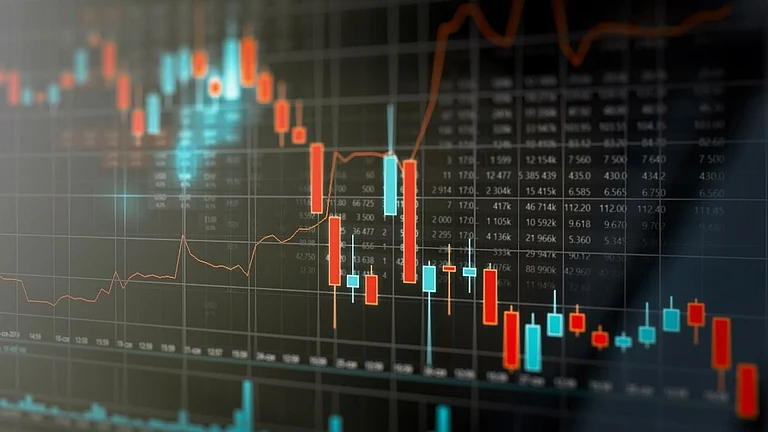The market volatility gauge, India VIX slipped 5.56 per cent to hit a day low of 17.17 on May 14, 2025. The ‘fear’ index has eased 24.5 per cent over the previous three sessions after India and Pakistan agreed to a ceasefire, bringing an end to four days of intense clashes. On May 9, 2025, it had peaked to a high of 22.75 amid heightened cross-border tensions between the two nuclear-armed nations.
A higher VIX value indicates increased market uncertainty and risk, while a lower value suggests increased investor confidence and stability.
Headline indices – the Sensex and the Nifty 50 – closed higher today. The Sensex surged 182.34 points, or 0.22 per cent, to end at 81,330.50, while the Nifty 50 inched up 88.55 points, or 0.36 per cent to settle at 24,666.90. The broader markets also showed strength today, as the Nifty Midcap 100 and Nifty Smallcap 100 jumped 1.11 per cent and 1.44 per cent, respectively.
On the sectoral front, barring private banks and financial services, all other sectoral indices ended in the green. Metals led the sectoral gainers, with Nifty Metal surging 2.46 per cent.
Says Ajit Mishra - senior vice president, research, Religare Broking: “India VIX’s sharp 24 per cent drop reflects easing market anxiety, fuelled by the recent India-Pakistan ceasefire, which removed a major geopolitical overhang and triggered a strong market rally.”
What’s Keeping India’s Stock Market Buoyed
According to Mishra, strong corporate earnings, foreign institutional investor (FII) inflows, and supportive policies have further buoyed stocks.
On the global front, too, tensions eased as the US and China made a truce to reduce the exorbitantly high tariffs imposed on each other, for at least 90 days. This has eased concerns of a global economic slowdown.
According to Mishra, this has boosted risk appetite among investors, which can be seen in the rally in broader market indices.
Over the last three sessions, the Nifty Midcap 100 climbed nearly 5.50 per cent and the Nifty Smallcap 100 surged 6.60 per cent, significantly outperforming the benchmark indices, which have gained roughly around 2.50 per cent.
Vinay Paharia, CIO of PGIM India Mutual Fund, gave a broader picture of the factors that have, till now, kept the Indian stock market afloat.
He said one key factor was the Reserve Bank of India’s (RBI) announcement of Open Market Operations (OMO) to inject liquidity into the financial system.
He said Trump's announcement of a 90-day pause on reciprocal tariffs for all countries except China worked well in calming market concerns.
Further, he said, RBI's decision to reduce the repo rate by 25 basis points (bps) to 6 per cent, along with a shift in its stance to be accommodative, contributed to improving investor confidence.
Paharia added that the India Meteorological Department (IMD) had predicted above-normal monsoon rainfall for the year, expected to be 105 per cent of the long-period average, with a 5 per cent margin of error, which has further provided a positive outlook for agriculture and the broader economy.
In addition, the RBI relaxed its Liquidity Coverage Ratio (LCR) guidelines, which is expected to improve credit availability and support growth in the banking and financial sectors.
However, the International Monetary Fund (IMF) had slightly downgraded India's FY26 GDP growth forecast to 6.20 per cent, from the earlier projection of 6.50 per cent, citing global trade tensions and ongoing economic uncertainty.
Lastly, he pointed out that US President Donald Trump had also indicated that tariff talks with India were progressing well, which has added to the overall sense of stability in the markets.
Is Volatility Behind Us Or A Bigger Storm Is Looming
Mishra of Religare cautioned investors of a few risks.
He said, “The India-Pakistan ceasefire is fragile, and global uncertainties, especially around trade and geopolitics, could quickly revive volatility.”
Though the volatility has subsided for the time being, Mishra has advised investors to remain “cautious and diversified amid lingering uncertainties.”
Paharia noted that while the markets have staged a strong recovery, volatility, and a macro slowdown are still present, particularly in retail and consumption.
However, he said he believes that demand will improve owing to tax cuts, lower interest rates, and reduced inflation, which should boost disposable incomes.
As the Q4 FY25 earnings season continues, Paharia noted a cautious outlook in the IT and FMCG sectors. He said financials continue to show growth, despite potential margin pressures.
He said the drop in crude oil prices is also positive for India, and would help reduce energy costs, while simultaneously giving the government more fiscal flexibility.
Paharia highlighted that while India is currently well-positioned in terms of global trade, rising tariffs could hurt global growth. Nevertheless, he said he is optimistic about India’s long-term prospects, particularly in areas like financialisation, premium consumption, digital economy, and healthcare.
















